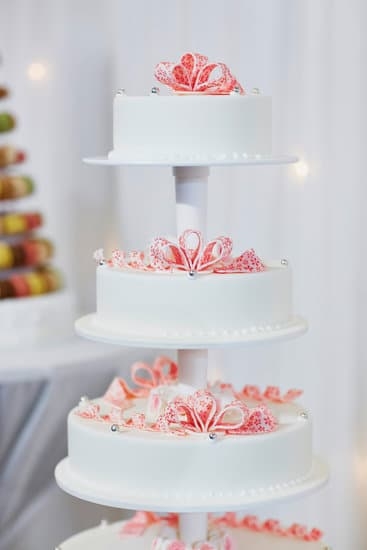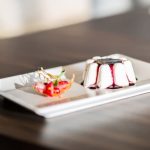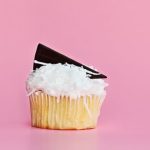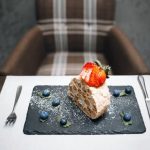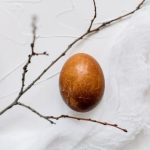Cake decoration is an essential part of baking that allows creativity to flourish and transforms a simple cake into a culinary masterpiece. Whether it’s for a special occasion or just to indulge in some sweet artistry, knowing how to decorate a cake can truly elevate the overall presentation and experience for both the baker and the recipient.
But what do I need to decorate a cake? This article will guide you through the essential tools, techniques, and supplies needed to embark on your cake decorating journey.
Understanding the importance of cake decoration goes beyond just aesthetics – it provides an opportunity for self-expression and personal touch. From simple designs to intricate patterns, the ability to adorn a cake with beautiful decorations showcases skill and artistry. With the right tools and techniques at hand, even beginners can create stunning cakes that are sure to impress.
In this comprehensive guide, we will delve into the world of cake decorating by outlining the essential tools required, explaining various piping techniques, discussing different types of frosting, detailing additional decorating supplies needed, providing tips on color mixing, exploring advanced techniques, and addressing common troubleshooting issues. By the end of this article, aspiring decorators will have gained valuable insights on what they need to successfully decorate a cake and take their baking skills to new heights.
Essential Tools
Cake decoration is an art that requires the right tools to achieve stunning results. When it comes to decorating a cake, having the essential tools can make all the difference in the final outcome. Some of the basic tools needed include a turntable, offset spatula, piping bags, and more.
A turntable is a fundamental tool that allows decorators to easily spin their cakes while frosting or decorating, ensuring even coverage and smooth finishes. An offset spatula is another must-have tool for spreading frosting and creating smooth surfaces on cakes. Piping bags are essential for intricate designs and writing on cakes, offering precision and control over the decoration process.
| Tool | Function |
|---|---|
| Turntable | Allows for easy spinning of cakes while decorating |
| Offset Spatula | Ideal for spreading frosting and creating smooth surfaces |
| Piping Bags | Used for precise designs and writing on cakes |
| Decorating Tips | Offers various patterns and designs when used with piping bags |
Having these essential tools at hand ensures that aspiring decorators have everything they need to bring their cake decorating ideas to life. With practice and patience, mastering the use of these tools will open up endless possibilities for creating visually stunning cakes that will surely impress any audience.
Piping Techniques
Rosettes
One of the most classic and versatile piping techniques is creating rosettes on a cake. To achieve perfect rosettes, start by holding the piping bag at a 90-degree angle to the surface of the cake. Squeeze out the frosting steadily while rotating your wrist in a circular motion. The key to beautiful rosettes is consistent pressure and movement. You can create larger or smaller rosettes by adjusting the size of your piping tip.
Borders
Borders add a finishing touch to your cake and can range from simple lines to intricate patterns. To pipe borders, use a round tip for straight lines or a star tip for more decorative borders. Hold the piping bag at a slight angle to the cake’s edge and pipe out the desired border design while applying even pressure. Practice different border styles like shells, zigzags, or beaded borders to enhance the overall look of your cake.
Writing
Adding personalized messages or names to cakes can be done through writing with frosting. Choose a fine round tip for writing and practice piping out letters on parchment paper before transferring them onto the cake. Use gentle pressure on the piping bag to create smooth and legible letters. Remember that consistency in letter size and spacing is key for neat writing on cakes.
Mastering these basic piping techniques will give you a solid foundation for decorating cakes with beautiful designs and details. Practice regularly to improve your skills and experiment with different piping tips and techniques to unleash your creativity when it comes to decorating cakes.
Types of Frosting
When it comes to cake decorating, the type of frosting you choose can make a big difference in the final look and taste of your creation. Understanding the different types of frosting available can help you achieve the desired outcome for your cake. Here are some common types of frosting used in cake decoration:
- Buttercream: Buttercream is a classic frosting made with butter, powdered sugar, and flavorings like vanilla extract. It is smooth, creamy, and easy to work with, making it a popular choice for both beginners and experienced decorators.
- Fondant: Fondant is a rolled icing that gives cakes a smooth, polished finish. It can be shaped into intricate designs and decorations, making it ideal for more elaborate cakes. However, some people find fondant to be overly sweet or dislike its texture.
- Royal Icing: Royal icing is a hard-setting icing made from egg whites or meringue powder and powdered sugar. It dries quickly and creates a firm surface that is perfect for intricate details like piping delicate patterns or creating textured effects.
Each type of frosting has its own set of pros and cons that should be considered before choosing the best one for your cake decoration project. Buttercream is versatile and delicious but may not hold up well in warm temperatures. Fondant provides a flawless appearance but may not be to everyone’s liking in terms of taste. Royal icing is great for detailed work but can be challenging to work with due to its quick-drying nature.
Knowing these distinctions will help aspiring decorators determine which type of frosting suits their needs best for their next cake decorating endeavor. Remember that practice makes perfect when it comes to mastering the art of cake decoration.
Decorating Supplies
Decorating a cake goes beyond just frosting and piping. To truly elevate your creations, you’ll need a variety of decorating supplies that add color, texture, and flair to your design. These supplies not only enhance the visual appeal of your cake but also allow you to express your creativity in unique ways. Here are some essential decorating supplies you should have in your arsenal:
- Edible Glitter: Edible glitter adds a touch of sparkle and glam to your cakes. Whether you want a subtle shimmer or a bold shine, edible glitter comes in various colors and sizes to suit your design.
- Sprinkles: Sprinkles are a classic choice for decorating cakes, adding pops of color and fun patterns. From traditional rainbow sprinkles to themed shapes and designs, sprinkles allow you to customize your cake with ease.
- Edible Pearls: Edible pearls are elegant decorations that bring sophistication to any cake. These small, round pearls can be used individually or clustered together to create intricate borders or patterns on your cake.
In addition to these popular options, there are many other decorating supplies that can take your cake decoration skills to the next level. Think about incorporating items like edible flowers, metallic dragees, chocolate curls, or even wafer paper designs to enhance the visual impact of your creations. Experimenting with different textures and finishes will give your cakes a professional touch that will impress any crowd.
When planning out your cake decoration project, make sure to consider the theme, occasion, and personal style you want to convey on the finished product. With the right selection of decorating supplies at hand, you can turn a plain cake into a stunning masterpiece that will delight both the eyes and taste buds of anyone who sees it.
Remember that while tools like piping bags and spatulas are necessary for smooth frosting application, it’s these additional supplies that truly give your cakes that wow factor. So get creative, experiment with different combinations of decorating supplies, and let your imagination run wild as you turn an ordinary cake into an extraordinary work of art.
Color Mixing
When it comes to decorating a cake, one of the key elements that can make or break your design is the color scheme you choose. Mixing colors to achieve the perfect shade can be a challenging task for beginners, but with some tips and tricks, you can elevate your cake decorating game to the next level.
So, what do I need to decorate a cake with beautiful colors? Let’s dive into some color mixing techniques that will help you achieve various shades and hues while coloring frosting for decoration.
First and foremost, invest in a good set of gel food colors as they are more concentrated than liquid food dyes and will give you vibrant and intense colors without watering down your frosting. When mixing colors, always start with a small amount of gel dye and add more as needed to reach your desired shade. Remember, it’s easier to darken a color than it is to lighten it, so go slow with your additions.
Another important tip is to use a color wheel as a guide when mixing colors. Understanding the basics of color theory – such as primary colors (red, yellow, blue), secondary colors (orange, green, purple), and complementary colors (opposite each other on the wheel) – will help you create harmonious color combinations for your cake decorations. For example, mixing red and green will give you brown rather than a vibrant maroon shade due to their complementary nature.
Additionally, don’t be afraid to experiment with different ratios of colors to achieve unique shades. You can create custom colors by mixing multiple drops of different food dyes together or adding white frosting to pastel shades for a softer look. Remember that practice makes perfect when it comes to color mixing, so have fun exploring and finding what works best for your cake decorating projects.
| Color Mixing Tips | Benefits |
|---|---|
| Use gel food colors | Intense and vibrant hues without watering down frosting |
| Refer to a color wheel | Create harmonious color combinations based on color theory principles |
| Experiment with ratios | Create custom shades by mixing multiple drops of different colors together |
Advanced Techniques
When it comes to taking cake decoration to the next level, advanced techniques play a significant role in creating intricate and impressive designs that can truly wow your guests. Whether you are looking to add a touch of elegance with sugar flowers, create detailed sculptures with fondant, or achieve stunning color gradients using an airbrush, these advanced techniques require practice and patience but can elevate your cake decorating skills to new heights.
Fondant Sculpting
Fondant sculpting is a popular technique used in cake decorating to create 3D designs and figurines that add a personalized touch to your cakes. To get started with fondant sculpting, you will need fondant (either store-bought or homemade), edible glue, modeling tools, and your creative vision. By learning how to mold and shape fondant into intricate shapes like flowers, animals, or objects, you can bring your cake decorations to life with unique and custom designs.
Sugar Flowers
Sugar flowers are delicate and realistic floral decorations made entirely out of edible materials like gum paste or fondant. These exquisite creations can add a touch of elegance and sophistication to any cake design, making them popular for special occasions like weddings and birthdays.
To create sugar flowers, you will need flower cutters, veiners, petal dusts, ball tools, floral wire, and floral tape. With practice and attention to detail, you can master the art of crafting lifelike sugar flowers that will impress your guests and take your cake decoration skills to the next level.
Airbrushing
Airbrushing is a versatile technique that allows decorators to achieve smooth color gradients, intricate patterns, and realistic textures on cakes. By using an airbrush machine with edible colors or lusters, decorators can create stunning ombre effects, intricate stenciled designs, and vibrant accents on their cakes.
Learning how to control the air pressure, distance from the cake surface, and color intensity are essential skills to master when airbrushing cakes. With practice and experimentation, you can unlock the creative possibilities of airbrushing in cake decoration by adding depth and dimension to your designs.
Troubleshooting
Cake decoration can be a fun and rewarding experience, but it can also come with its fair share of challenges. From frosting that won’t hold its shape to decorations that just won’t stick, there are common issues that may arise during the process.
One of the most common problems decorators face is air bubbles in their frosting or icing. These pesky bubbles can ruin the smooth finish of your cake, but they can be easily fixed by gently tapping the cake on a flat surface to release them.
Another issue that decorators often encounter is frosting that is too runny or too stiff. If your frosting is too runny, try adding more powdered sugar gradually until you reach the desired consistency. On the other hand, if your frosting is too stiff, you can thin it out with a little bit of milk or water. It’s important to make small adjustments at a time to avoid over-correcting and ruining your frosting.
Additionally, getting buttercream to achieve the right temperature and consistency can be tricky, especially in different weather conditions. If your buttercream is too soft and melting off the cake, try chilling it in the refrigerator for a short amount of time before continuing decorating.
Conversely, if your buttercream is too firm and difficult to spread, let it sit at room temperature for a while or add a touch of warm cream to soften it up. By knowing how to troubleshoot these common issues, aspiring decorators can tackle any challenge that comes their way and create stunning cakes every time.
Conclusion
In conclusion, cake decorating is a wonderful form of art that can transform a simple cake into a stunning centerpiece for any occasion. Aspiring decorators must have the right tools and supplies in their arsenal to bring their creative visions to life. From basic essentials like turntables and piping bags to more advanced techniques like fondant sculpting and airbrushing, there is a wide range of skills and materials needed to achieve professional-looking cakes.
One of the key aspects of successful cake decoration is mastering different piping techniques, such as rosettes, borders, and writing. Understanding the various types of frosting available, including buttercream, fondant, and royal icing, is also crucial in determining the overall appearance and taste of the finished product. Additionally, knowing how to troubleshoot common issues that may arise during decorating can save time and frustration in the creative process.
Whether it’s mixing colors to achieve the perfect shade or adding decorative elements like edible glitter or sugar flowers, attention to detail is essential in creating visually appealing cakes. By following these key points outlined in this article on what aspiring decorators need to know to successfully decorate a cake, individuals can develop their skills and unleash their creativity in the world of cake decorating.
So next time you ask yourself “What do I need to decorate a cake?” remember that with practice, patience, and passion for baking, you can create beautiful confections that will impress any crowd.
Frequently Asked Questions
What Materials Do You Need to Decorate a Cake?
To decorate a cake, you will need various materials such as cake decorating tips, piping bags, offset spatula, turntable, cake leveler, and food-safe paint brushes. These tools will help you achieve professional-looking designs on your cakes.
What Ingredients Do You Need to Decorate a Cake?
The key ingredients needed to decorate a cake include frosting or icing in different colors, sprinkles, edible glitter or luster dust, fondant or gum paste for sculpting decorations, and food coloring to achieve vibrant hues. These ingredients are essential for adding visual appeal to your baked creations.
What Do You Use to Decorate Cakes With?
There are numerous options available for decorating cakes depending on the desired look. Common choices include buttercream frosting for piping flowers and borders, royal icing for intricate lacework or lettering, fondant for smooth finishes and intricate designs, and edible decorations like fresh fruit, chocolate shavings or curls, and edible flowers.
Each of these options provides a unique touch to your cake design based on your preferences and skills.

Welcome to our cake decorating blog! My name is Destiny Flores, and I am the proud owner of a cake decorating business named Cake Karma. Our mission is to provide delicious, beautiful cakes for all occasions. We specialize in creating custom cakes that are tailored specifically to each customer’s individual needs and tastes.

